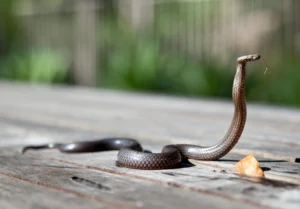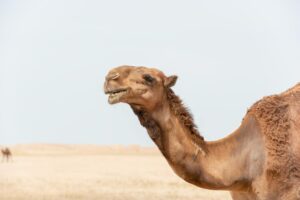What do you know about african wild cats ?
1-Description of wild cat

The classification of wild cats is still controversial to this day, but the latest studies carried out by members of the Cat Specialist Group in 2017 have identified a new pattern of classification of this type, one of the findings to which these studies refer is the separation of the African wild cat type (Felis lybica) from its European counterpart (Felis silvestris) after the former Felis lybica was considered to be a variety of felis selvestris type. (Felis s. lybica).
African wild cats are slightly smaller than European wild cats and less dense fur. It’s hard to distinguish it from a wild cat where they’re both about the same size and look, but a wild cat is kind of heavier with longer legs. Another characteristic of an African wild cat is the brown rusty color that hits the red behind the ears. The color of its fur ranges from dark gray, yellow brown, sandy and red, with dark lines and stains and yet faint, the individuals in dry areas are generally pale.Both the chin and the throat are white, and the lower side of the body is relatively faint with a balmed or red-throwing brown scan. His legs carry several dark, black lines, randomly spread over the sides, and the front legs clearly show two parallel black lines, usually the bottom of the four black feet. Its tail is just about or a little bit longer than its body length, its breadth is gradually waning towards its tip, often holding two or three dark rings and ending up with a black space. In spite of all the quarrying characteristics mentioned above, the diagnosis of this species and its distinction from the cats are sometimes complex, as are the possibility of mating the wild and the human species, which produces hybrid breeds. Males are usually larger and heavier than females.
African wild cat measurements :
Total length HB 760-440 mm
Tail length T 390-200 mm
CBL 100-80 mm skull length
Animal height HT 410-340 mm
The length of the ear E 70-50 mm

What’s an African wild cat eating?
Like most small cat species, the wild cat diet consists mainly of small rodents (rats and rats), and in some regions of Europe on rabbits, it also adds to its food list birds, reptiles, amphibians, eggs, some species of large insects and spiders. Sometimes cats eat grass in order to cleanse their stomach of ingestable food like bones, furs and feathers.

Where does the African wild cat live?
The wild cat lives in many different habitats, such as dense forests and bushes, near the wetlands and agricultural areas, large steppes and meadows, mountain areas, savannah areas and desert areas, which can live and adapt well even at a height of 2200 m above sea level.
2-Countries in which African wild cats are present
Algeria, Egypt, Morocco, Saudi Arabia, Tunisia, the Sultanate of Oman, Kuwait, the Sudan, Syria, Jordan, Palestine, Iraq, Mauritania, Lebanon, the United Arab Emirates, Western Sahara, Yemen, Libya, Djibouti, Somalia, Iran, Afghanistan, Andorra, Angola, Azerbaijan, Benin, Botswana, Burkina Faso, Burundi, Cameroon, the Central African Republic, Chad, China, the Democratic Republic of the Congo, Eritrea, Ethiopia, the Gambia, Ghana, Gibraltar, Guinea, Guinea, Guinea-Bissau, India, Kazakhstan, Kenya, Kyrgyzstan, Lesotho, Lithuania, Malawi, Mali, Mongolia, Mozambique, Namibia, the Niger, Nigeria, Pakistan, Rwanda, Senegal, Sierra Leone, South Africa, Swaziland, Tajikistan, the United Republic of Tanzania, Togo, Uganda, Uzbekistan, Zambia, Zimbabwe.
3-Africa’s wild cat reproduction.
Period of pregnancy 64 days
Number of bellies during year 03-02
Age of sexual puberty 10 months
Age of sexual puberty 10 months




